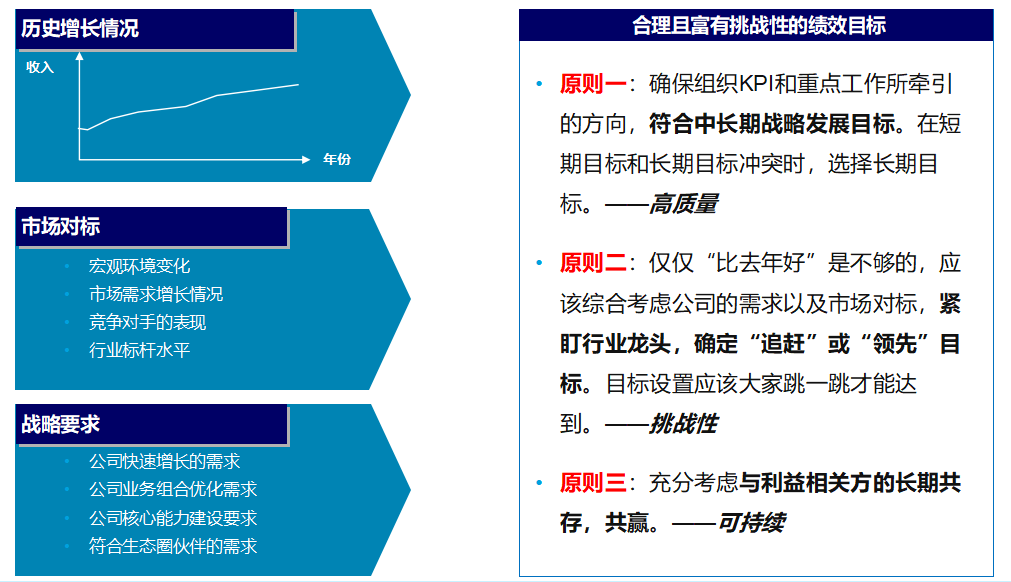

Companies often struggle with how to set performance indicator values, unsure whether to use absolute values or relative values.
For example, sales revenue assessment can use total sales or sales growth rate; the former is an absolute value, while the latter is a relative value. Using absolute values does not reflect the degree of improvement; however, if using growth rates, some innovative businesses may see their figures multiply, while mature businesses may find it challenging to grow by 10%.


(Key points for setting performance target values)
1►
How to set performance target values?
The setting of performance target values should correspond to strategic requirements. When companies do strategic planning and goal setting, there are three perspectives, known as the three eyes of strategic planning:
01
/ Customer Perspective
From the customer perspective, what kind of company do we want to become, and what goals should we set?
02
/ Competitive Perspective
From the competitor’s perspective, how should we determine our goals?
03
/ Future Perspective
Looking from the future to the present, what level should we achieve, or how do we define what we want to be in the future?

(Practical scenarios for absolute and relative values)
2►
Should we use absolute values or relative values when setting performance indicators?
Regardless of whether the indicator values are set using absolute or relative values, whether aiming to outperform the market, competitors, or oneself, and whether based on customer, competitive, or future perspectives, it reflects the company’s determination and how it plans to act in response to external environments and resource conditions.


About Zhong En
